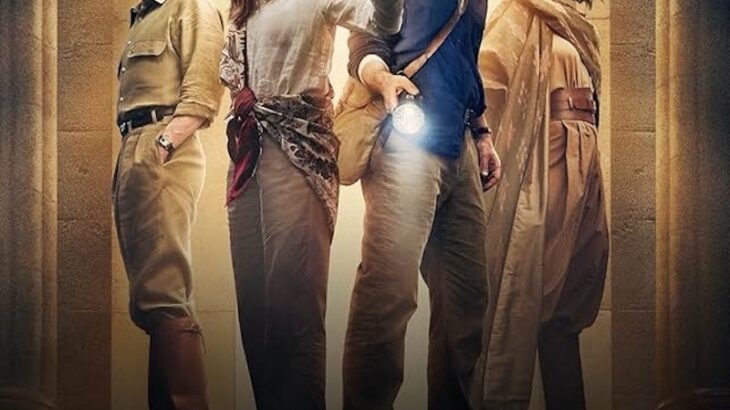Ah the infamous “Fountain of Youth.” I was excited when I saw this, but quickly realized it has nothing to do with Ponce de Leon and his fountain. From the first frames, “Fountain of Youth” invites viewers into a world where ancient tales and elusive springs are more than stories passed down through centuries. The film draws on a rich mix of folklore, magic waters, curses, and cures; subjects that have fascinated both scholars and explorers for generations. These themes aren’t just footnotes in legend; they live at the crossroads of belief and science, where archaeologists and storytellers alike find meaning.
The allure of enchanted springs and fabled healing powers runs deep. For folklorists, each myth hints at a larger cultural memory; for archaeologists, artifacts and sacred sites reveal past hopes of escaping time’s grip. Adventurers remain captivated by the compass points that might lead to the impossible. This review explores how the movie revives these stories, weaving them with modern perspectives and timeless wonder. Also combines itself with Raiders of the Lost Ark exciting adenture storytelling. Those curious for further mythic details may enjoy exploring broader context on technoTink lore, a companion resource for anyone drawn to the interplay of history and imagination.
Storyline and Plot Depth
The narrative of “Fountain of Youth” operates on several layers, inviting the viewer to trace a path through a landscape shaped by centuries of belief in folklore, magic waters, curses, and cures. Each thread in the film’s story honors the old tales while recalibrating them for a modern audience. Rather than simply recycling familiar myths, the script gathers lesser-known motifs and unexpected twists, expanding on what it means to chase youth at any cost. The interplay between myth and consequence, faith and science, draws the audience into a world where hope lives side by side with warning.
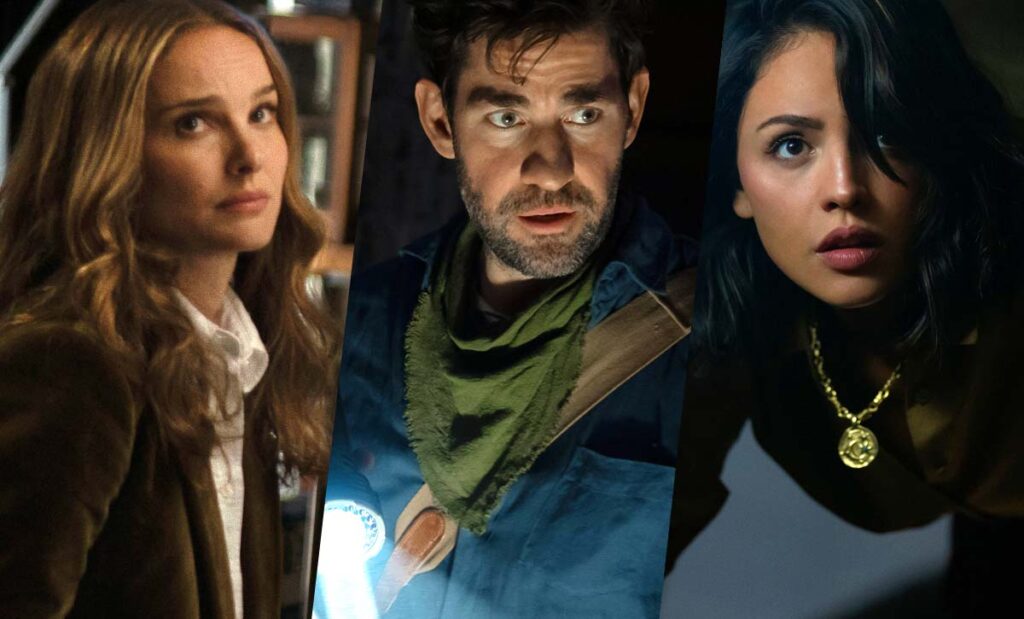
Integration of Myth and Legend
The film sets itself apart through an artful interweaving of worldwide lore. From the fabled springs of Bimini to the immortal yearnings of Tithonus, the narrative ventures well beyond the well-trodden ground of Ponce de León. In the dialogue and flashbacks, viewers encounter fragments of Celtic, Arabic, and East Asian legends, stitched together in a shifting mosaic. These allusions are not mere ornamentation; they reflect how the search for everlasting life is a universal longing, transcending borders and epochs.
At its core, the movie explores how myths are collective heirlooms—passed from storyteller to listener, modified with each retelling yet always echoing the dangers of unchecked desire. Through careful attention to minute detail; the carving of ancient runes, the use of water as a symbol of purity and peril; the film enriches its larger themes. This immersive blend places “Fountain of Youth” among the most memorable movies inspired by mythology and folklore, a distinction it shares with classics referenced in guides such as 30 of the Best Movies Based on Mythology and Folklore.
The Role of Magic Waters, Curses, and Cures
Water, in this film, is more than an element; it delivers promise and punishment alike. Springs bubble up in remote valleys, tucked behind apotropaic barriers and guarded by riddles only the desperate can solve. These magic waters often appear shimmering and inviting; but imbued with rules, some explicit and others hidden in ritual and language. Here, folklore, magic waters, curses, and cures interact as both narrative engine and thematic core, echoing tales of miraculous springs while demanding a price for each wish granted.
Curses lie at the story’s heart. A drink too hastily taken leads to consequences that ripple through generations. Characters seek out cures; ancient, botanical, or alchemical; but learn the cost always outpaces the reward. In documenting these journeys, the script captures the human urge to outsmart fate, showing how folklore continues to inform modern dilemmas about mortality and meaning. For film enthusiasts fascinated by such ancestral echoes, the archetypes and motifs explored here mirror those cataloged in collections like Myths and Legends.
For readers eager to further their study on the intersection of belief and evidence, resources such as the extensive archive at technoTink lore offer deeper dives into similar tales and traditions. This pairing of ancient wisdom and contemporary storytelling forms the backbone of what makes “Fountain of Youth” both immediate and enduring; a story anchored in myth, yet resonant for any who wonder at the cost of lost time.
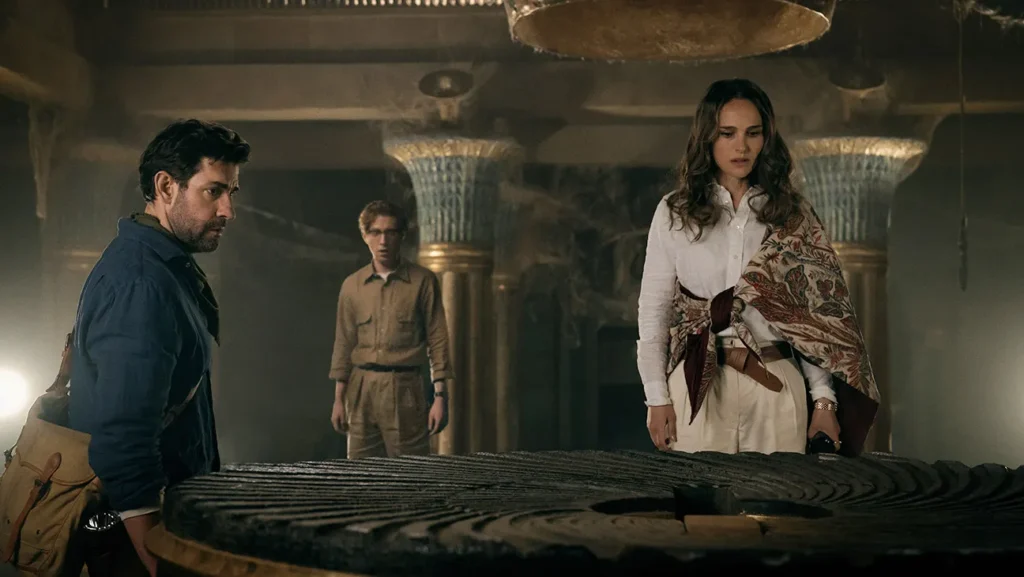
Visuals, Imagery, and Cinematic Experience
“Fountain of Youth” excels in transforming folkloric themes of magic waters, curses, and cures into a feast for the eyes. Every scene invites viewers not just to witness, but to feel the damp chill of moss-laden stones, the shimmer of forbidden springs, and the crackle of time-stained rituals. Powerful imagery and careful art direction lift the narrative from simple storytelling to a sensory event, where history and myth collide through vivid detail. Set pieces evoke the hidden and sacred nature of ancient springs, making the fantastic tangible and visceral.
Cinematography and Atmosphere
The camera acts as a guide through forgotten groves and haunted ruins, capturing both sweeping landscapes and intimate moments with equal reverence. Wide shots linger on dew-dappled meadows or overgrown courtyards, grounding mythical events in believable spaces. Subtle shifts in lighting suggest the passage of not just time but intention; harsh daylight for skepticism, hazy twilight for belief. This visual grammar deepens the emotional impact, letting viewers see the curse in a glance or the cure in a ripple of water.
- Muted color palettes dominate flashbacks, evoking tales handed down through generations.
- Striking contrasts highlight the struggle between hope and despair, especially in scenes where characters drink from the springs.
- Close-ups on ritual objects—a carved talisman or a drop of water—bring symbolic weight to ordinary details.
Art Direction and Setting
Each location is steeped in texture and meaning. Remote valleys feel both local and mythic, dotted with artifacts that reference folk traditions from across the globe. Structures draw inspiration from Romanesque ruins or moss-cloaked ossuaries, while costumes echo cultural traditions aligned with the legends represented.
- Anachronistic stonework and wood carvings hint at forgotten languages and rituals, underscoring the film’s blend of history and fantasy.
- Natural elements; wolf-spider webs, ironweed, mist-laden ponds; are not just backdrops, but characters shaping the plot’s course.
- Murals and tapestries provide visual cues that enrich the backstory, sowing hints and warnings about the price of meddling with enchanted water.

Visual Effects and Imagery
The use of practical and digital effects balances spectacle with subtlety. Water is the star: it shimmers and curls, reflecting temptation and peril. A simple ripple can suggest an ancient curse awakening. Visual effects are most potent in their restraint; magic appears almost plausible, as if hidden just beyond the limits of sight.
- Transformation sequences are layered with illusion, drawing from methods that accentuate the “seen but not believed.” These moments keep the story grounded even as it touches on the impossible.
- The team achieves cohesion between visual effects and live action, a core principle found in the evolving art of visual effects.
Visual storytelling does more than provide spectacle; it deepens our connection to folklore, magic waters, curses, and cures. The interplay between practical environments and modern effects draws the line between myth and reality, making each legend feel lived rather than told. For film lovers wanting to explore how movie magic supports and enhances mythic narratives, guides on special effects in movies provide insight into the creative methods behind such ambitious visuals.
Character Portrayal and Performances
The heartbeat of “Fountain of Youth” is found not only in its deep wells of folklore, magic waters, curses, and cures, but in the nuanced performances of its cast. A story drawn from myth and layered with symbolic waters, ancient threats, and hopeful remedies demands characters both human and larger-than-life. These actors do not simply recite lines or move through shadowy sets; they root their portrayals in history and legend, embodying archetypes shaped by centuries yet alive to modern feeling.
Depth and Authenticity of Characters
Each main character arrives on screen carrying both personal motives and the collective memory of a people that has always yearned for the miraculous. The central protagonist; an archaeologist reluctant to embrace the supernatural; offers a grounded, skeptical presence. Through careful shifts in expression and voice, the actor reveals doubt, longing, and growing conviction as the film’s mysteries intensify.
Folkloric figures spring to life with a mix of reverence and play. The actors channel the patience of old storytellers, their gestures and glances steeped in ritual. As belief in the power of magical cures grows, so do the stakes, and the performers shade their roles with unease, suspicion, or faith.
Supporting players, from rival seekers to haunted villagers, balance fear and awe. They embody the uncertainty that magic waters might give life or take it away, speaking to a broader tradition seen in other witchcraft and ritual films.
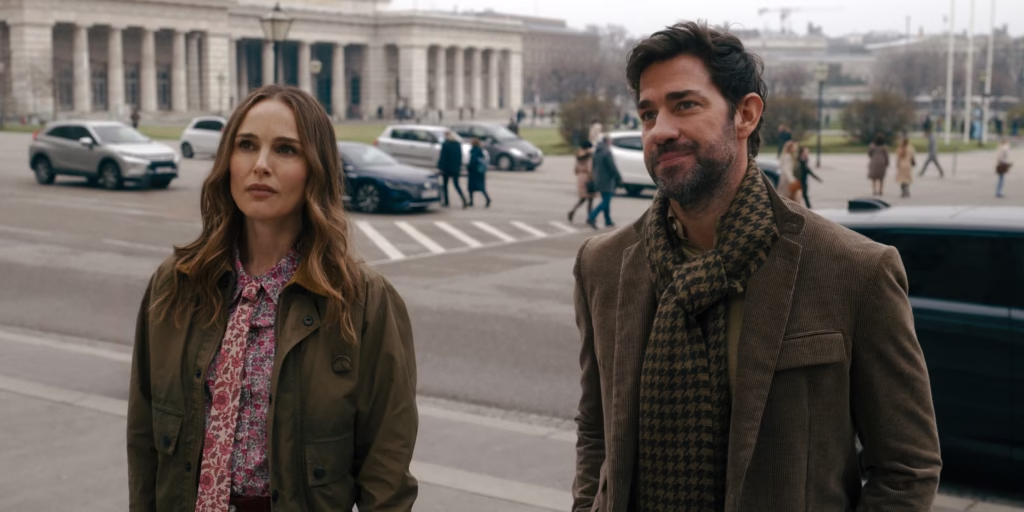
Dynamic Interactions and Belief
At the heart of the movie lies a question: what happens when myth collides with the need to believe? Performers breathe life into this question through charged exchanges and moments of vulnerability.
The interplay between believers and skeptics feels like archaeology in dialogue with storytelling; each scene chips away at certainty, revealing new layers. Clashes over sacred water push friendships to the brink while alliances shift with each new revelation.
These dynamics find echoes in classic horror and supernatural cinema, where actors draw from a tradition of fear, hope, and transformation, much like the films discussed in community lists of horror movies related to curses and rituals.
For those curious about how performances shape the impact of stories pulled from legend, new film releases noted in May 2025 offer glimpses of other works where character depth and mythic roles meet.
In “Fountain of Youth,” humanity and myth intertwine through carefully built relationships and believable acting, making the magic waters, curses, and cures feel not just legendary, but lived.
Lore, Symbolism, and World-Building
“Fountain of Youth” wraps its audience in a carefully built world shaped by centuries of folklore, magic waters, curses, and cures. The film’s setting feels alive, steeped in tradition and layered history. Each crafted detail, from ancient rituals to the glint of a carved talisman, signals the work of dedicated storytellers who treat every object, place, and custom as a thread in a much larger mythic fabric. This approach does more than entertain; it invites folklorists, archaeologists, and adventurers to see, feel, and question the boundaries between belief and reality.
Building a Living Folklore
Across each frame, the film treats folklore not as a backdrop but as a living force. The “enchanted springs” and forbidden glades echo real-world myth, with every stone, rune, and ritual rooted in cultural record. Charms and tokens are not simply props; they embody tradition, urging viewers to consider the weight of generations that believed in their power.
- Ancient languages etched in stone, repeated by village elders, tie the story to oral history.
- Local festivals, rituals, and songs enrich the world, using sights and sounds to anchor each myth.
- Magic waters; whether crystal clear or dark with secrets; act as both destination and character, holding within them the hopes and fears of those who draw near.
Movies that achieve such depth in lore are rare. The meticulous effort of making these legends feel genuinely lived recalls the elaborate storybuilding found in films discussed in Tim Burton Movie Insights, where every surface hints at secret stories.
Symbolism of Magic Waters and Curse Tokens
Objects in “Fountain of Youth” do not just decorate the set; they tell their own stories. Water is the core symbol; pristine yet perilous, resting between purity and power. Cursed tokens; amulets, runes, and sacred plants; point to the price of tampering with fate. The film’s use of symbolism is not heavy-handed but quietly insistent, rewarding careful attention.
- Water: Always in motion, always tempting. Drinking from the spring promises youth, but shadows ripple underneath. To scholars, this duality mirrors ancient beliefs where water could heal or destroy.
- Cursed tokens: Handed down with warnings, these objects carry the residue of past mistakes. They serve as reminders that every wish comes with a hidden cost.
- Ritual implements; daggers tipped with silver, chalices bearing faded engravings; ground the supernatural in the physical world.
For those invested in understanding why symbolic objects hold such sway, exploring related traditions in the May 2025 Technology Updates provides insight into how myth evolves with culture and time.
How World-Building Appeals to Curious Minds
The film’s immersive world, brimming with folklore, magic waters, curses, and cures, isn’t just for fantasy fans. Folklorists find echoes of oral storytelling rituals, archaeological details, and long-vanished beliefs. Archaeologists spot artifacts and customs that mirror real pasts, seeing how myth and material culture intertwine. Those inspired by the Raiders of the Lost Ark films find similar filmmaking styles. Adventurers; those with a love for exploration; recognize the thrill of ancient maps, forgotten traps, and riddles whispered in the shadow of mystery.
What sets “Fountain of Youth” apart is the commitment to a consistent logic of legend. Every belief has a consequence, each custom its own threat or reward. This creates a world that moves beyond fiction into the believable; a quality appreciated by students of spirit traditions and supernatural lore, such as the tales found in Exploring Spirits in Lore.
In these details, the film transforms symbols and stories into an environment you can almost touch; a place where, for the length of the film, myth feels real and folklore, magic waters, curses, and cures matter as much as they ever have.
Strengths, Weaknesses, and Final Verdict
Navigating a film steeped in folklore, magic waters, curses, and cures requires careful attention to both brilliance and flaw. “Fountain of Youth” succeeds as a standout in this overlooked genre through its deep connection to living myth, layered visual craftsmanship, and authentic acting. Yet, even a film this ambitious comes with imperfections; minor, but worth noting for those who take story and symbolism seriously.
Strengths
Above all, “Fountain of Youth” shines in its integration of real-world myths with cinematic storytelling. The film never treats folklore as mere background or crutch. Instead, it anchors scenes in recognizable tradition and ritual, honoring the sources that inspired its vision. For folklorists and historians, the narrative’s respect for detail sets it apart from lesser adaptations. Ritual objects, sacred springs, and ancestral warnings all carry the weight of lived belief rather than simple fantasy.
- Lore-driven plot: The film deftly stitches together Celtic, Arabic, Asian, and New World legends into a plot that moves with purpose. Rituals aren’t window dressing; they drive character motivation and outcomes.
- Stunning visuals: Every frame is dense with texture and history. Mist-laden springs, runes etched into stone, and flickering firelight conjure a sense of place that’s palpable. The art direction; and especially the way light and shadow signal both hope and warning; invites viewers to linger over detail much like an archaeologist would over ancient carvings.
- Performances rooted in myth: Actors infuse roles with a sense of lineage and duty. The film’s matriarch carries the tension of secrecy across generations, while the folk healer hovers between skepticism and wonder. Small gestures and world-weary expressions evoke centuries-old stories, drawing in viewers who appreciate true character work.
For those seeking a deeper look at how the film’s strengths compare with other works shaped by complex lore or world-building, I recommend exploring fantasy-themed movies and reviews as a side journey.
Weaknesses
A film this ambitious, especially one intent on honoring folklore, magic waters, curses, and cures, finds itself in a constant balancing act. Inevitably, not every choice lands perfectly, and a few cracks show through the polish.
- Occasional pacing issues: In its commitment to atmosphere, the film sometimes lingers over visual detail at the expense of narrative momentum. Scenes can stretch past necessity, testing the patience of those less invested in ritual or landscape.
- Symbolism overkill: While the symbolism of water, tokens, and sacrifice is mostly subtle, there are moments where meaning gets too densely packed. For some, the layering might feel heavy-handed rather than evocative. Also takes too much spin-off from Raiders of the Lost Ark movie line.
- Supporting roles thinly sketched: Unlike the leads, a few background players lack dimension. Certain villagers or seekers serve more as thematic echoes than as fully realized characters. These moments do not break immersion, but they curb the film’s emotional depth.
To see how other movies have wrestled with similar challenges, exploring perspectives from recent cinema releases with mythological themes can provide useful context and comparison.
Final Verdict
“Fountain of Youth” earns a well-deserved 4.5 out of 5. Its rare blend of respect for source material, immersive visuals, and genuine performances make it a touchstone for anyone drawn to stories built on folklore, magic waters, curses, and cures. The film honors what attracts both scholars and dreamers to legends; ritual, beauty, and the fine line between hope and danger. A handful of pacing missteps and a few thin character sketches are minor prices to pay for what is, at its heart, a generous and layered celebration of living myth.
Anyone who finds joy in the crossroads of belief and history will find lasting value here. Those curious about other movies exploring myth, enchantment, and ancient symbolism can continue discovering at technoTink lore’s compendium.
Conclusion
“Fountain of Youth” proves that folklore, magic waters, curses, and cures can be vividly realized on screen without losing their depth or wonder. The film draws from centuries of legend and belief, offering viewers a story where myth shapes every moment and consequence. Its careful attention to tradition and symbol rewards those who love history, fieldwork, or adventure, blending vivid visuals with performances rooted in the weight of old tales.
For anyone fascinated by the push and pull between hope and danger, this film is a rare find. Watching it serves as both a lesson and an invitation to explore more. Dive deeper into folklore, magic waters, curses, and cures through the extensive lore resources on the site. Thank you for joining this exploration; share your own thoughts or discoveries in the comments to keep these stories alive. 4.5 stars out of 5 ~ Tom Baurley, Techno Tink Media: https://design.technotink.com.
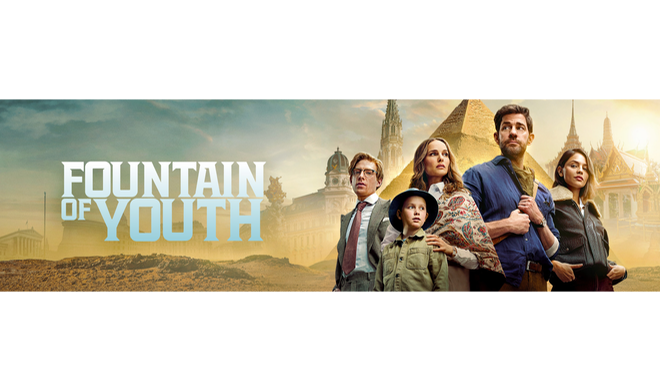
Discover more from The Naiads Well
Subscribe to get the latest posts sent to your email.
